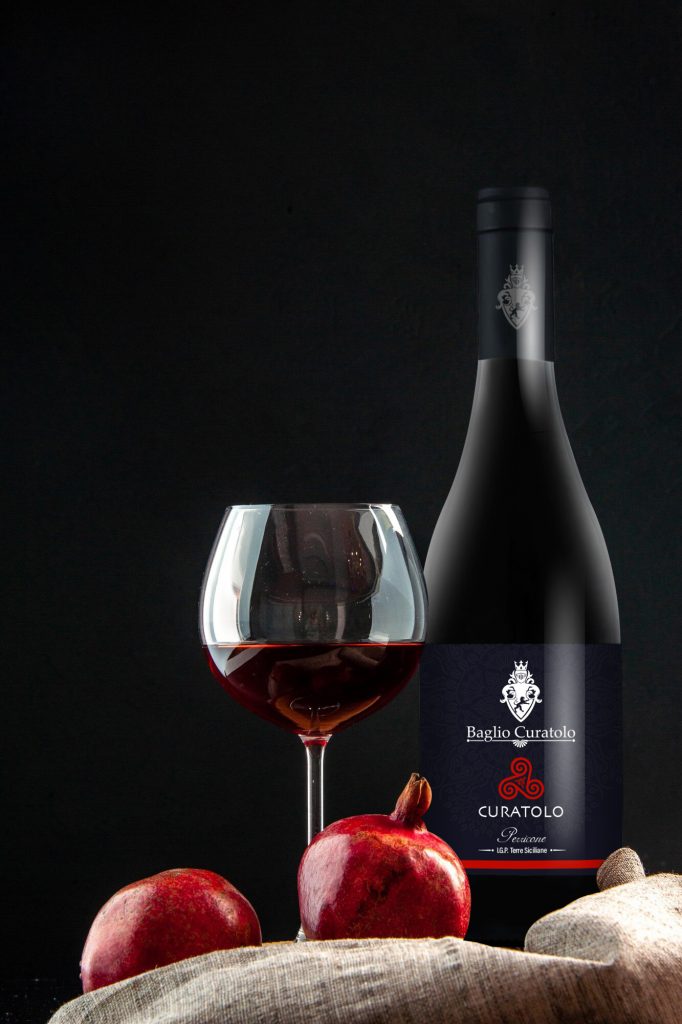THE AROMA OF WINE
The olfactory evaluation of a wine is the most important test. The human sense of smell is in fact 25,000 times more sensitive than taste. Furthermore, man is able to distinguish more than 400,000 smells, while taste is based on only 4 main sensations.
The perception of odours takes place at the top of the nasal cavity during the phase of inhalation (due to vortex currents in the nose) or when the wine is in the mouth and, warming up, its odour rises into the nasal cavity (by convection).
In fact, certain sensations that we experience when we drink wine are olfactory sensations referred to as “retronasal”.
Aromas and odours are due to chemical compounds present in extremely low concentrations, which at room temperature turn into vapour and are then perceived. The same compound if present at low concentrations may evoke pleasant sensations, while at higher concentrations may result in unpleasant sensations.
There is a variety of”odorous” substances, and their classification is made by association with already known natural odours.
For wine, eight categories of smells have been drawn up:
•FLOWERS: Rose, Violet, Artemisia (in red wines); Acacia, Elder (in white wines).
•FRUIT: Raspberry, Morello, Apple, Peach, Strawberry, Currant (especially in young wines)
•DRIED FRUIT: Dried figs, Almonds, Walnut, Fruit jams (especially in young wines)
•HERBS-WOOD: Fern, Underbrush, Pine, Resin, Tobacco, Wood
•ROASTING: Toast, Coffee, Cocoa, Smoked
•AROMATIC HERBS: Blueberry, Vanilla, Anise, Bay leaf, Thyme, Carnation, Spices, Onion, Pepper
•ANIMALS: Butter, Leather, Musk
•Other: Tar
The origin of the odour can derive from the grapes: in this case we may speak of primary odour or aroma. Fruit and flower odours belong to this category of odours.
If the odour forms during fermentation, we define this as a secondary odour or aroma (for example, yeast odours and some fruity odours).
Finally, if the smell forms during the ageing of the wine, we define this smell as a tertiary aroma or “bouquet” (barrel smells: vanilla, wood, roasting)

PRIMARY AROMAS
he grapes’ aromas are contained in the leaves, in the pulp, and in the skin of the grapes. Depending on the ripeness of the grapes, they can change considerably.
The responsible party for these odours are chemical compounds, known as essential oils, of a complex nature and belonging to the category of terpenes, or of the aldehyde or ketone derivatives.
These are compounds that alone are poorly soluble in water, but whose solubility is favoured by the presence of sugars. For this reason, the aromatic grapes are usually the most sugary (e.g., Muscat, Aleatico, Malvasia, Sauvignon, and Traminer grapes).
These compounds react easily with oxygen in the air, and convert into less odorous compounds. For this reason, aromatic wines are to be preferably enjoyed when young, and after aging they take on a “vanished” scent.
SECONDARY AROMAS
These odours are developed during fermentation and depend on the type of yeast used, the method of fermentation, and the composition of the must.
According to some experts these aromas are derived from proteic substances present in grapes that during this phase split into amino acids and afterwards into amino acids and alcohols.
Some wines acquire their characteristic odour during this phase (e.g. the violet odour of Lambrusco).
During fermentation, carbon dioxide (gas) forms from the must. If the fermentation is very rapid, the gas escapes in a tumultuous way, carrying the fragrant substances with it, since they are quite volatile.
TERTIARY AROMAS
Tertiary aromas form during wine ageing, and are due to the reaction of some types present first with the atmospheric oxygen (oxidation), and then with other compounds (acetalisation, esterification and resinification processes).
In the last century Pasteur had already shown that in the complete absence of air, wines maintain the characteristics of young wines.
The oxidation of alcohols is their reaction with oxygen to form aldehydes, and subsequently, acids (from the oxidation of aldehydes). At high temperatures vinegar can form.
The aldehydes formed react with the alcohol present in wine, forming compounds called acetals with an odour that is often intense and pleasant. This reaction is called acetalisation.
A typical example of this is the Cognac odour detectable in some aged white wines.
The acids formed react with the alcohol present in the wine to produce esters; this reaction is called esterification and characterizes the fragrance of many wines.
If too many esters are formed the smell becomes unpleasant and reminiscent of some nail polish solvents (ethyl acetate).
Resinification is a process not yet fully understood. It is probably due to phenomena of extraction (solubilisation) of compounds contained in the barrel’s wood caused by the alcohol present in the wine.
It’s a process characteristic of liqueur-like white wines with a high alcohol content left at temperatures above 20 ° C, and bestows a characteristic tar odour (e.g. in Madeira, Marsala, Port, and Jerez wines, and in cooked wine). This characteristic is considered a fault in table wines and is defined as aroma maderization.


